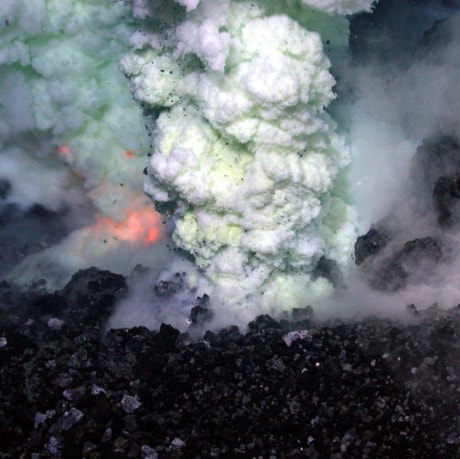SAN FRANCISCO — Scientists have witnessed the eruption of the deepest submarine volcano ever discovered, capturing for the first time video of fiery bubbles of molten lava as they exploded 1,200 metres beneath the surface of the Pacific Ocean.
Researchers are calling it a major geological discovery.
A submersible robot witnessed the eruption during an underwater expedition in May near Samoa.
The high-definition videos were presented Thursday at a geophysics conference in San Francisco.
Scientists hope the images, data and samples obtained during the mission will shed new light on how the ocean’s crust was formed, how some sea creatures survive and thrive in an extreme environment and how the earth behaves when tectonic plates ram into each other.
“It was an underwater Fourth of July,” said Bob Embley, a marine geologist for the National Oceanic and Atmospheric Administration.
“Since the water pressure at that depth suppresses the violence of the volcano’s explosions, we could get the underwater robot within feet of the active eruption.”
The eruption was a spectacular sight: Bright-red magma bubbles shot up releasing a smoke-like cloud of sulfur, then froze almost instantly as they hit the cold sea water, causing black rock to sink to the to the sea floor. The submersible hovered near the blasts, its robotic arm reaching into the lava to collect samples.
Earth and ocean scientists also said the eruption allowed them to see for the first time the real-time creation of a material called boninite, which had previously been found only in samples a million or more years old.
Witnessing this deep-sea volcanic eruption was 25 years in the making. Researchers from NOAA and the National Science Foundation had studied deep-sea volcanoes extensively but never witnessed an eruption this deep and in this detail. Eighty per cent of the earth’s volcanic activity occurs in the sea, but their underwater locations have complicated scientific efforts.
The mission’s chief scientist, Joseph Resing, last year detected volcanic material in the water in the area, and realized it was erupting. In May, the researchers travelled to area and sunk the submersible robot, called Jason, hoping to make scientific history.
“When we got there, we put the sub down and within in an hour and a half we found an eruption there in its full glory,” said Resing, who is a chemical oceanographer at the University of Washington. “We haven’t seen this before and now for the very first time we see molten lava flowing on the sea floor.”
Scientists said the water around the volcano was more acidic than battery acid, but that shrimp and certain microbes were able to thrive in such a harsh environment. Biologists were also excited about a new opportunity to study these creatures to see if they are unique to this volcanic environment.
